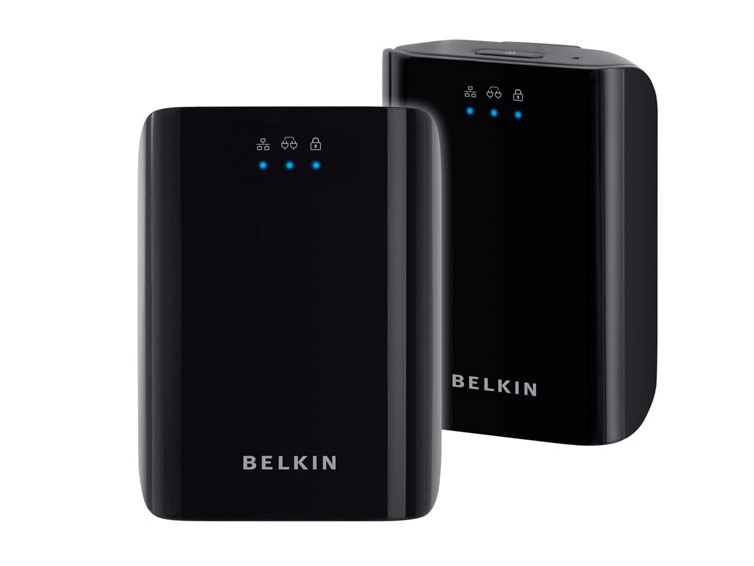Powerline: The reliable alternative to Wi-Fi
The best choice for HD streaming?

Powerline networking is a technology that's capable of transforming an in-house mains power circuit into a home networking infrastructure. Neater than a wired network, faster than a wireless one, it's literally a 'plug-and-play' solution that's ideal for the average home.
Most Powerline products are based on a HomePlug specification developed by the HomePlug Alliance and certified according to CE standards. Each device in a Powerline network requires its own plug adapter.
Each plug adapter features a familiar Ethernet socket and has its own MAC address to identify it on a network. You simply install the configuration software on a PC or Mac, and connect the Powerline adapters to the devices that you want to link together (using standard Ethernet cables). Plug the adapters into the mains and that's it - instant networking.
There are tremendous possibilities here. Link your ADSL modem router in the living room to a Powerline adapter and you can pipe broadband to any mains socket in the house. Got a digital media adapter? Why rely on the up-and-down signal strength of a wireless network to stream digital music when Powerline networking will give you a rock-solid connection?
How Powerline works
The concept of using electrical cabling for transporting data isn't a new one. The mains wiring in the average home can support a variety of frequencies. As electricity uses 50/60Hz signals, extra data can be transported along the same wiring at much higher frequencies, without causing any interference.
The first version of the HomePlug supported a maximum throughput of 14Mbps, although like the 54Mbps 802.11g Wi-FI standard, it never actually attains this speed. A speed of between 5Mbps is more realistic, but this is still easily fast enough for sharing broadband or digital music around the home.
Sign up for breaking news, reviews, opinion, top tech deals, and more.
An updated version of the HomePlug standard boosted the data speed from a maximum of 14Mbps to 85Mbps, although speeds of 18-20Mbps are more realistic and adapters are common. An 85Mbps kit costs around £60-70 for a pair. We're now Version 2.0 of the HomePlug standard, dubbed 'HomePlug AV'. The standard promises maximum speeds of up to 200Mbps, which translates to around 90Mbps in practice. This is good enough to transmit HD video around the home. Prices are coming down - Belkin has released its Powerline AV Starter Kit which you can pick up for £70-80.
Powerline networking just works. Its main advantage is obviously that you don't have to install any new cables, and unlike wireless, there are no concerns over range. Security is also assured, not only by the encryption technology that's built into the adapters, but also by the simple fact that data can't leak out beyond the mains wiring in your house.
As more and more network- and internet-capable devices start appearing in the home, Powerline networking technology could prove instrumental in the development of home networking and connected entertainment.
At a glance: Powerline networking
- Home networking using mains electric wiring
- 85Mbps adapters deliver up to 20Mbps real-world speeds
- 200Mbps adapters deliver up to 90Mbps real-world speeds
- Adapters are reliable and secure, but can be costly